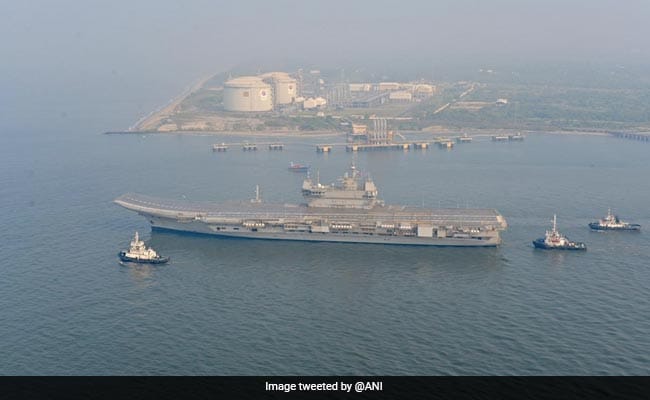New Delhi, 25 August: India’s first indigenous aircraft carrier IAC ‘Vikrant’ will be handed over to the nation by Prime Minister Narendra Modi on September 2, to celebrate ‘Azadi Ka Amrit Mahotsav’.
This ship, built in India, will provide anti-submarine warfare capability to the Navy. India has now joined a select club of countries including the US, UK, Russia, China and France that have designed and built aircraft carriers of over 40,000 tonnes. IAC Vikrant is an example of ‘AatmaNirbhar Bharat’ with over 76% indigenous content.
Vice Chief of the Navy, Vice Admiral SN Ghormade, told a press conference on Thursday that the MiG-29K was planned to be operational before the Vikrant, hence it was designed accordingly. But now the aircraft carrier has to be deployed indigenously for which the work is underway with DRDO. Along with this, the purchase of fighter jets for the aircraft carrier is also being finalised. So far, the American F-18 Super Hornet and the French Rafale-M have been tested and there is an option to choose between the two. Keeping in mind the future requirements, the Navy is preparing to take about 26 fighter aircraft.
The Vice Admiral said that the Indian Navy is looking at indigenous solutions for drones like the Predator UAV. He said, “Indigenization is the way forward for us and we want our R&D organisation to develop its capabilities for long lasting unmanned aerial vehicles at high altitudes.” Ghormade said that the country’s first indigenous aircraft carrier IAC Vikrant weighing 40 tonnes has successfully completed all the four sea trials. The first test was completed on August 21, last year, the second on October 21 and the third on January 22 this year.
The Vice Chief of the Navy said that the complete cabling of about 2,500 km long INS Vikrant has been done in India. “This is a big achievement for us.” Warship-grade steel has also been made in India with the help of the Indian Navy, DRDO and the Steel Authority of India, he added. It can later be exported to other countries.
“We should have a high-level of deployment in the Indian Ocean region that can counter any misadventures,” he continued.
All efforts were made to make INS Vikramaditya quickly available during the standoff with China and INS Vikrant was built quickly.
Commodore Vivek Thapar, Project Director, IAC Vikrant, said that the first test of the warship was to establish the propulsion, electronic suite and basic operations. During the second sea trial in October-November, the ship was seen through her motion in the context of various machinery tests and flight tests. The third test looked at the ship’s navigation and communication systems. Simultaneously, a large number of onboard instruments and systems were also tested. The last and fourth sea trials of IAC ‘Vikrant’ started in May which have been successfully completed last month.
He pointed out that the indigenous design of the aircraft carrier manufactured at Cochin Shipyard Limited for the Indian Navy and with over 76% indigenous material is a shining example in the nation’s quest for ‘AatmaNirbhar Bharat’ and ‘Make in India’ initiative. This has increased India’s indigenous design and manufacturing capabilities. India has now joined a select club of countries including the US, UK, Russia, China and France that have designed and built aircraft carriers of over 40,000 tonnes.
During the construction of this modern aircraft carrier, the design was changed and the weight was increased from 37,500 tons to over 40,000 tons. Similarly the length of the ship became 262.5 meters and 61.6 meters wide. It can carry about thirty aircraft, which will include about 25 ‘fixed-wing’ fighter aircraft.
The Kamov Ka-31 fitted in it will fulfill the airborne early warning role and this indigenously built ship will provide anti-submarine warfare capability to the Navy. The combat capability, reach and versatility of the aircraft carrier will add tremendous capabilities to the nation’s defence and will help safeguard India’s interests in the maritime domain.





